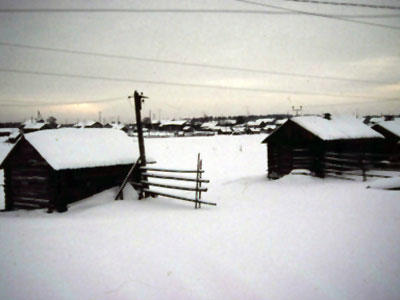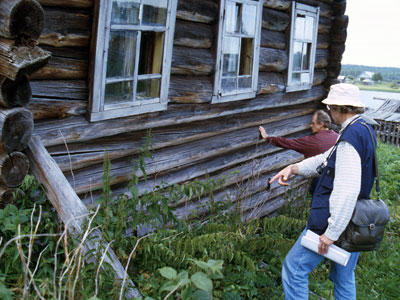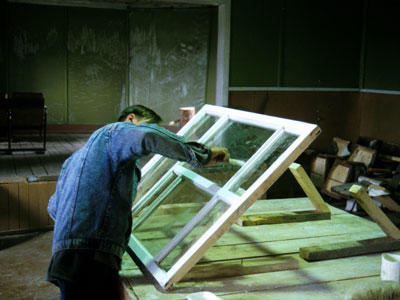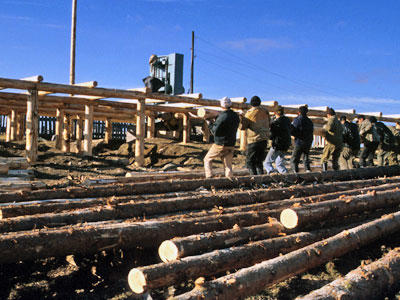Located on the Russian-Finnish border, Paanajärvi is the last intact village in the district of Viena Karelia along the Kemi River. Established in the fourteenth century as a trading post between the Vikings and the people of Byzantium, the village contains excellent examples of vernacular wooden architecture. The village also represents the living oral folk tradition of the Kalevala. It was from villages such as Paanajärvi that the classic Kalevala, the Karelian-Finnish epic, was created. In the 1950s, a plan for a hydroelectric plant across the Kemi River was approved; if constructed, Paanajärvi would be flooded. In anticipation of the plant, new constructions were banned in the village, thus the traditional architecture remained unchanged since that time, though progressively deteriorating. The plan appeared to be forgotten in subsequent years, but resurfaced in 1990 when the Karelian parliament denied the construction of a nuclear power plant planned by the Russian Energy Ministry.
1996, 1998 and 2000 World Monuments Watch
Paanajärvi was included on the Watch in 1996, 1998, and 2000 Watch. In 1998, WMF, with support from the Samuel H. Kress Foundation, assisted the Juminkeko Foundation with the implementation of a four-week training program for young village residents on the theory and practice of conservation of vernacular wooden structures, as part of a restoration plan created by Juminkeko. Trainees, taught by Finnish architects and a local master carpenter, performed emergency repairs on village houses. The success of the program led to a second award from the Kress Foundation for a three-month workshop, held in summer of 1999, in which trainees repaired deteriorated windows and roofs in the village. Over 100 windows were repaired, efficiently reducing the consumption of firewood during the winter. Trainees built a workshop in the village to house a timber saw and a forge provided by the Finnish Ministry of Environment, providing a sustainable means by which materials and facilities could be ready for future restoration work and local employment. Further funds from the Finnish Ministry of Foreign Affairs and the Finnish Culture Foundation allowed the program to continue well into 2002; trainees were awarded certificates as “Independent Restoration Workers.”
During the Soviet regime, Viena Karelia was part of a closed zone; visitors were prohibited from entering the area. It was not until 1991, after the fall of the Soviet Union, that the village was opened to international scholars. Visiting ethnologists have determined that the village represents a unique bridge between Karelian and Russian culture that respected but did not assimilate to Russian culture. As of 1998, the momentum of Karelian and Finnish preservationists outpaced that of the Russian economy, as the power plant construction was put on hold. The folklore village of Paanajärvi is steadily being revived and restored; in 2006, it was awarded a Europa Nostra medal for the restoration efforts underway. Despite these successes, the threat of construction of the hydroelectric plant continues to loom over the village.




